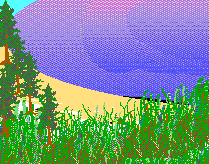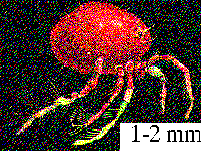
Fundamental lessons about the make-up of ecosystems, the organisms that live in them, and the dependancies between the organisms. Also included are lessons on the process of water quality measurement. In the process, the children are involved in these practical activities:
The children go on excursions on Pleshcheevo lake and the small rivers which
feed the lake. During the excursions the children describe the geographic
location of the water systems, the locations of water sample collection, and
analyze the water for pH, Nitrates, Nitrites and bacterial counts (Fecal
Coliform, etc.)

The children observe the water life and plants (where there are located, how they are distributed, etc.). Since it is difficult to study and analyze the majority of animals and plants in their natural environment, the children take samples in glass jars for more precise analysis and observation in the laboratory. This is very important for the analysis of the quality of the water.

Observing the lives of many types of water animals, especially small invertibrates, is most coveniently done in the laboratory, in glass jars and acquariums. The children like to perform this type of analysis, because it opens up a whole new world of water life which is almost impossible to observe in its natural environment. The final phase of the work on the projects is the interpretation of results.
The children are helped to correctly formulate their conclusions about the ecological situation of the water by the computer-based expert system.
The study of biological diversity An example: Butterflies